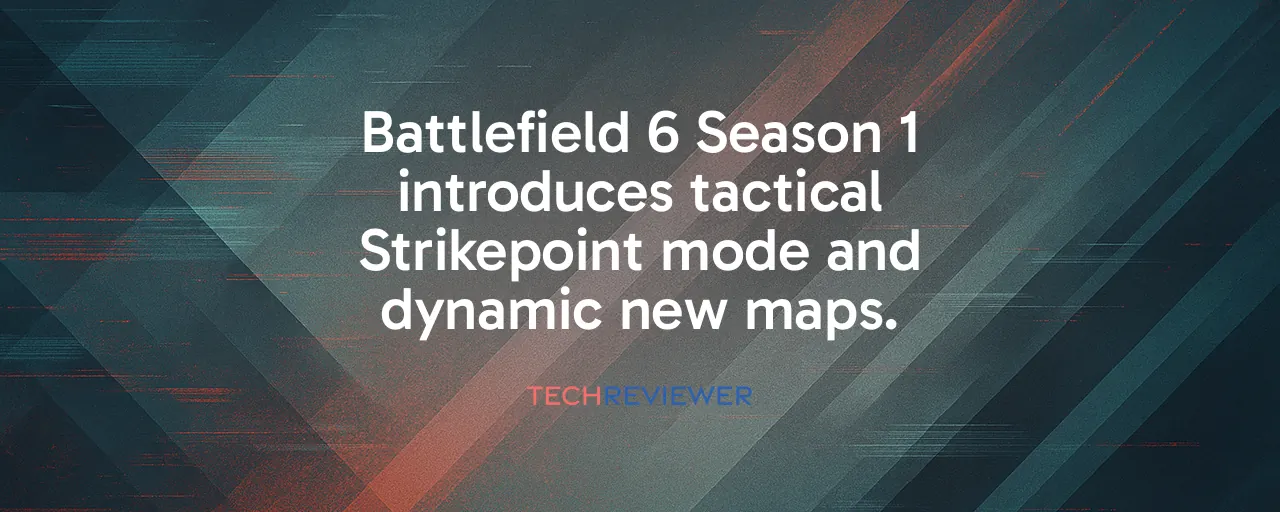A New Chapter for Battlefield's Legacy
Battlefield 6 hit the ground running on October 10, 2025, selling over 7 million copies in just three days and earning an impressive 84 on Metacritic. The game, a return to the franchise's roots of chaotic, large-scale warfare, has players buzzing with excitement. Now, Season 1, launching October 28, rolls out in three phases, bringing fresh maps like Blackwell Fields, a tactical 4v4 Strikepoint mode, and new weapons like the SOR-300C rifle. This update, crafted by Battlefield Studios under Vince Zampella's leadership, aims to keep the momentum going against rivals like Call of Duty Black Ops 7.
What makes this launch stand out is the sheer ambition. With a reported budget topping $400 million, Battlefield 6 is among the most expensive games ever made. The collaboration of four studios, DICE, Criterion, Motive, and Ripple Effect, delivers a polished experience, from optimized Frostbite engine performance to dynamic destruction that lets you level entire buildings. Yet, the real spark lies in how Season 1 invites players to not just play, but shape the game itself.
Portal Mode: Players Take the Reins
Battlefield 6's Portal mode is where things get wild. Powered by the open-source Godot engine, it hands players the keys to create custom game modes, tweak rules, and even host persistent servers. Want to recreate Battlefield 3's iconic battles or invent a completely new mode? Portal's visual scripting tools make it possible, no coding degree required. Early adopters have already built everything from historical war reenactments to experimental tactical showdowns, proving the mode's potential to extend the game's life far beyond developer updates.
Take the Portal community as a case study. Creators are churning out unique experiences, like a Vietnam-era skirmish or a zombie-infested map, shared through web-based builders. This freedom has sparked a creative explosion, with players hosting servers that draw thousands. However, discovery remains a hurdle, as default settings hide player-created content, meaning many miss out unless they dig into the menus. Battlefield Studios could boost this by improving curation and making these creations more visible, ensuring every player can explore the community's best work.
Tactical Thrills With Strikepoint and New Maps
Season 1's Blackwell Fields map throws players into a California oil field where fire spreads dynamically, turning cover into ash. It supports massive 64-player battles with tanks and helicopters, but also scales down for intense 4v4 Strikepoint matches. This new mode, with single-life rounds and capture-or-eliminate goals, feels like a love letter to tactical shooter fans, blending Battlefield's chaos with Rainbow Six Siege's precision. New weapons, like the GGH-22 pistol and Mini Fix sniper rifle, add depth, rewarding sharp aim and quick thinking.
Eastwood, arriving November 18, transforms a quiet villa into a warzone, complete with golf course ambushes and helicopter dogfights. The phased rollout, wrapping up with the Ice Lock Empire State map on December 9, keeps players hooked with fresh content. Yet, not everyone's thrilled. Some argue the focus on large-scale maps overshadows smaller, tactical modes like Strikepoint, which could shine in esports if given more spotlight. Balancing these playstyles will be key to keeping both casual and competitive players engaged.
Stumbling Blocks: Accessibility and Anti-Cheat Woes
Not everything's smooth sailing. In regions like South Africa and Australia, low player populations lead to matches filled with bots, ranging from 30 to 90 percent, making games feel empty and less competitive. Players in these areas report ping times over 140 milliseconds, a far cry from the seamless battles elsewhere. Community feedback points to a fix: bring back server browsers or rental servers, like those in Battlefield 3, to let players build persistent lobbies. Without this, entire regions risk being left behind.
Then there's the Secure Boot requirement for EA's Javelin anti-cheat system. It blocked 330,000 cheating attempts during beta, but at a cost. Some PC players faced system crashes and reported hardware issues when attempting to comply with BIOS requirements. Linux and Steam Deck users are entirely locked out, sparking frustration among advocates for open platforms. While EA's technical director apologized, the issue highlights a tough tradeoff: robust security versus player accessibility. Finding a middle ground could win back trust.
Monetization and the Road Ahead
Battlefield 6's monetization sticks to a fair formula: free gameplay updates paired with optional cosmetic purchases and battle passes, priced around $10 to $20 per season. This avoids pay-to-win pitfalls, but the fear-of-missing-out pressure from seasonal content can push players to overspend. A rumored Battlefield Pro subscription, potentially offering exclusive cosmetics and server hosting, could deepen engagement but risks alienating budget-conscious fans, especially with the game's $70 price tag and Call of Duty's Game Pass advantage.
Looking ahead, a free-to-play battle royale mode is rumored, though no official launch date has been confirmed. With 100-player matches and Battlefield's signature destruction, it might rival Call of Duty Warzone. Success hinges on execution: can EA keep the content flowing while fixing regional matchmaking and anti-cheat issues? If Portal's community creations gain better visibility and the competitive scene around Strikepoint grows, Battlefield 6 could redefine what a shooter can be, blending player-driven creativity with blockbuster battles.
